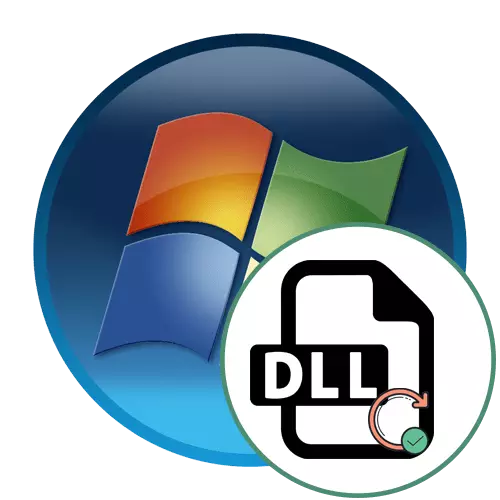
Dynamically connected DLL format libraries in Windows 7 perform certain options during the operation of the operating system itself and when the software is started. Many similar files have versions, that is, developers periodically change them, bringing some edits or asking new values for objects. This leads to the fact that the files are updated, but it occurs in different ways. Today we want to affect this topic, told in detail about all available methods of installing new versions of DLL.
Definition of the current version of the DLL file
To begin with, let's talk about defining the current version of the installed DLL object. Make it can even a user who does not have administrator rights, since general information is provided to absolutely everyone. It is recommended to check it now, to make sure of a successful update. There is nothing complicated in the execution of the task, it lies only in four simple steps and looks like this:
- Laying the necessary object and click on it right mouse button.
- In the context menu that opens, click on the "Properties".
- Wait for the properties window appearing, where you move to the tab "Details".
- Now you can read the current version of the file.
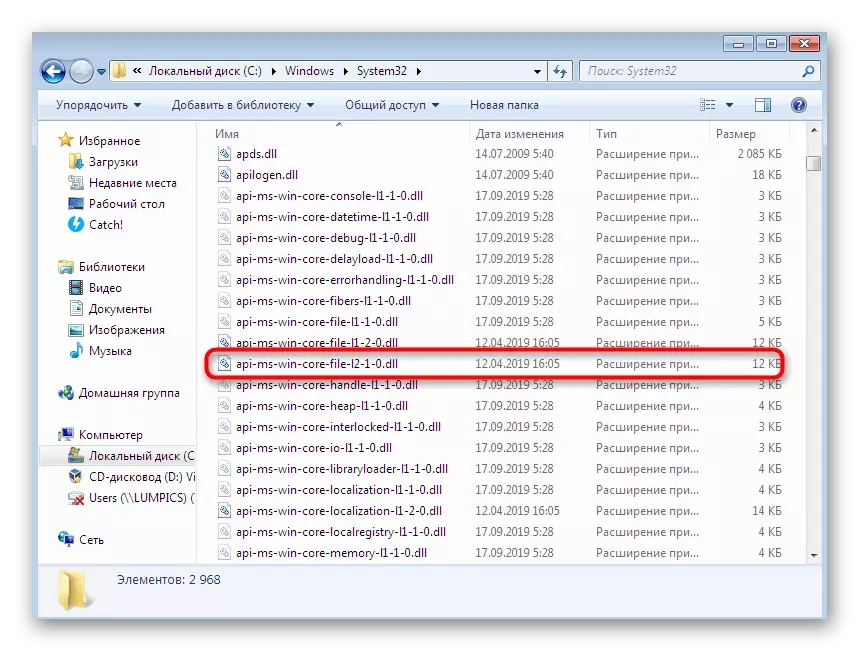



Exactly the same actions are recommended to perform immediately after installing updates to check the effectiveness of the method.
Update DLL libraries in Windows 7
Before you start considering the basic methods of achieving the goal, we want to note that often the user cannot find out if he really needs to update the DLL library, because no notifications indicating this simply appear. In most cases, such actions are only an attempt to optimize the operation of the OS by using the latest versions of optional files. Additionally, it is worth knowing that dynamically plug-in libraries are built-in and third-party, which depends on the type of receipt of them, as well as some developers use unique files. It is because of this that there is a huge number of different options that will be suitable only in certain situations. With all of them we suggest familiarizing yourself.Method 1: Setting the latest Windows updates
We first consider updating the DLL-elements built into the operating system. Their new versions come out quite rarely, and if it happens, they are installed with a total update produced by developers. It turns out that it does not work out separately to update the desired file, it remains only to act in this way:
- Open "Start" and go to "Control Panel".
- Here you are interested in the section called "Windows Update".
- Run the update check and when they are detected, make installation.

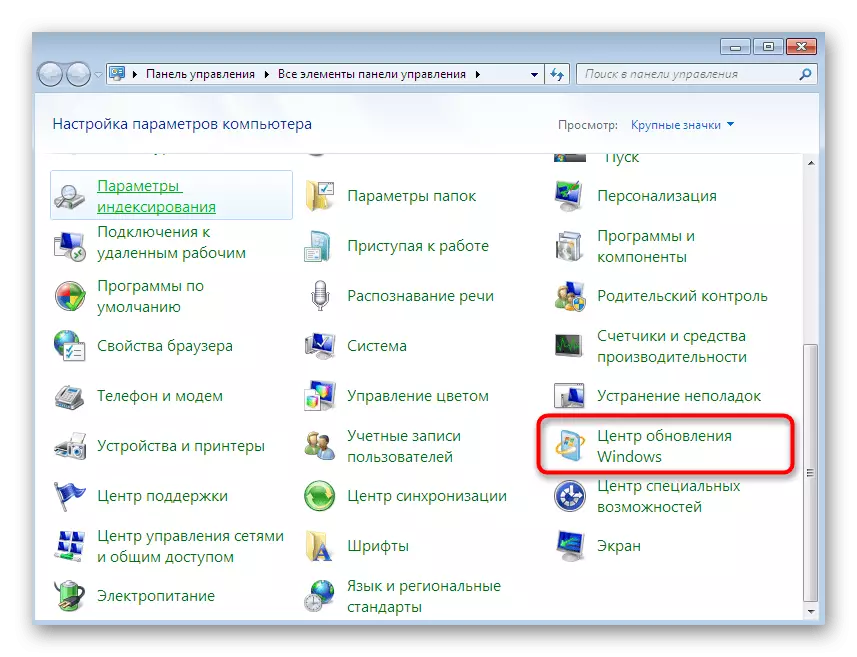

During installation, you can do your affairs, and at the end you will be warned that the changes will take effect after rebooting the computer. Make it and check if the built-in DLL libraries have been updated. If you have additional questions or difficulties when performing this method, read the special training articles on this topic, while moving on one of the links below.
Read more:
Updates in the Windows 7 operating system
Manual installation of updates in Windows 7
Solving problems with installing Windows 7 update
Method 2: DirectX Update
With embedded objects, we figured out. All the following methods will be devoted to third-party dynamically plug-in libraries, and here the whole difficulty is to determine the origin of the component. This information is often displayed in the properties of the file all in the same section "Details" or is freely available on the Internet. As for obtaining updates of the DLL components, which are part of DirectX, this happens like this:
Go to the official website for downloading the web installer DirectX
- The developers have created a special web installer DirectX, the scanning system and determining which files are missing or which of them are outdated. We offer to take advantage of them by downloading the installer from the official site.
- At the end of the download, run the executable file by clicking on it with the LKM.
- Confirm the opening if a warning from the security system appears on the screen.
- Take the terms of the license agreement, noting the marker to the corresponding item, and go to the next step.
- Cancel Bing Panel Install, if not required.
- Expect initialization completion.
- You will be notified that all the necessary components are already installed or updated just.
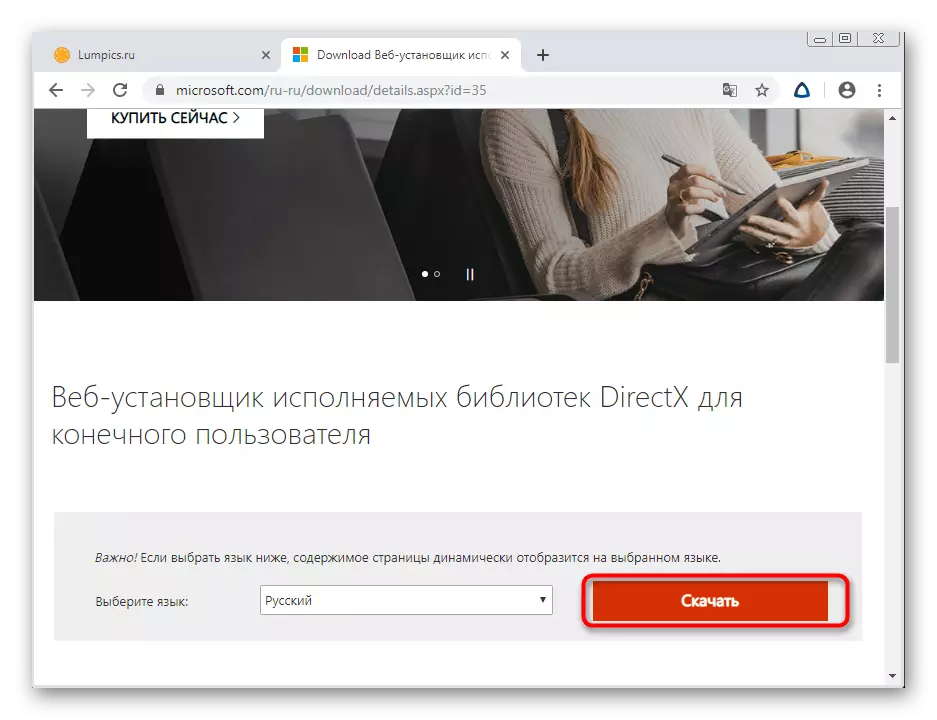
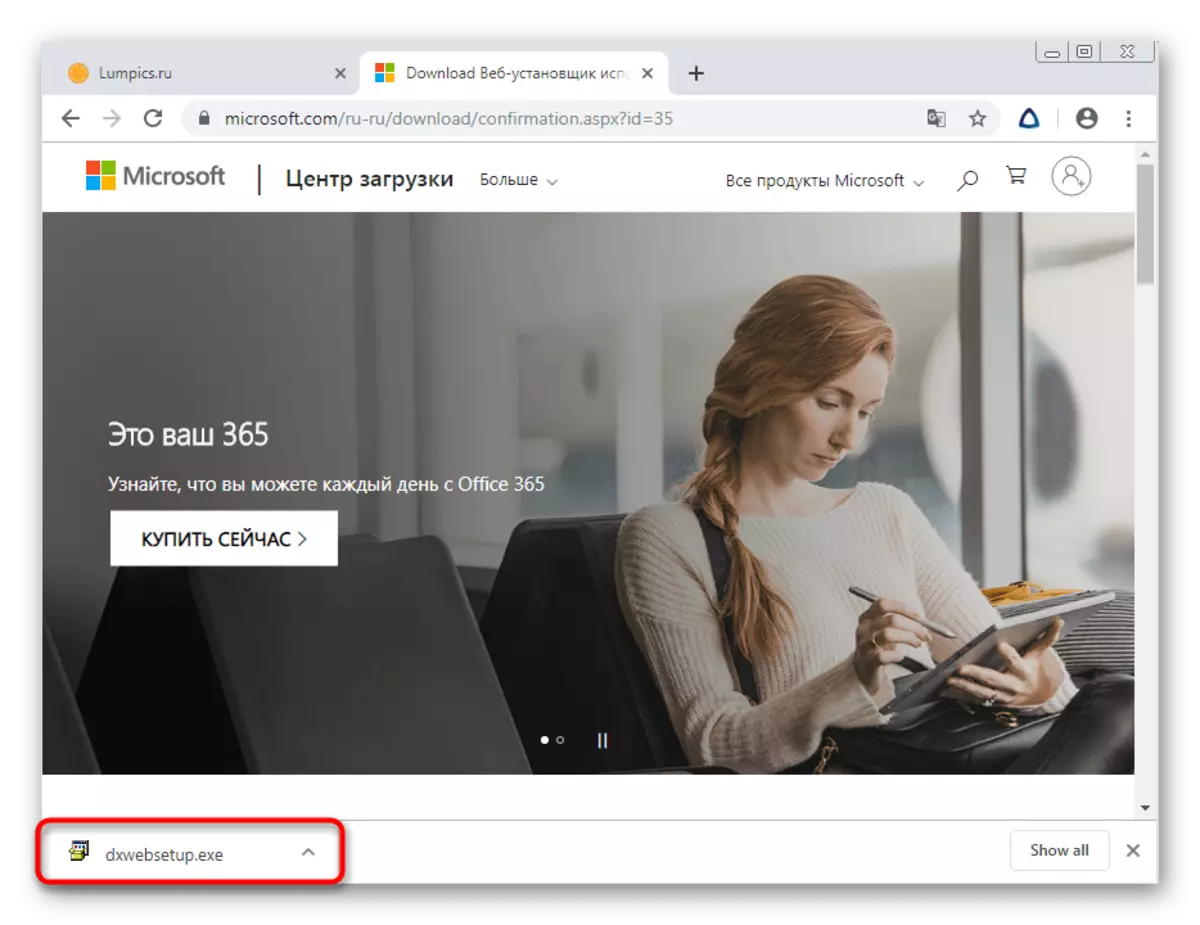
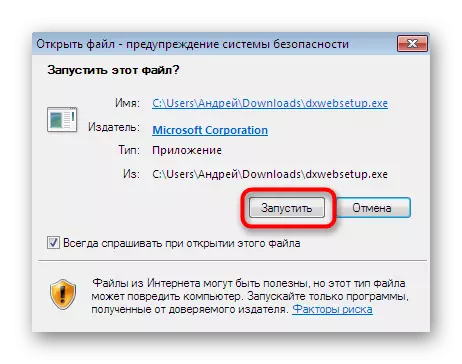



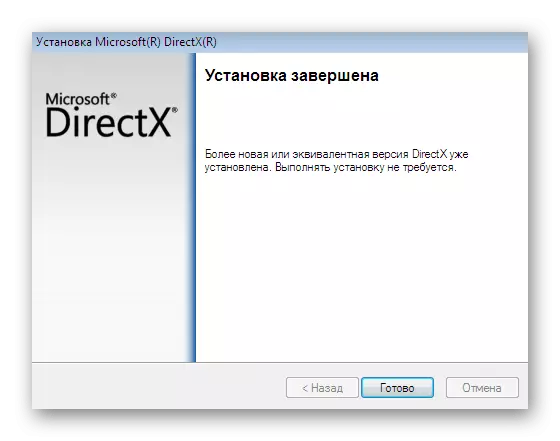
After this operation, you can not restart the computer, but immediately move to the validation of the variant. If the necessary files were really updated, then the version will change in these information.
Method 3: Installing current versions of Visual C ++
As you know, Microsoft is now supporting a huge number of versions of Visual C ++ components that some users have the need to install absolutely all assemblies to ensure the correct operation of the software. Often, new assemblies have updates of old DLL libraries. During installation, they are simply replaced if it is necessary, so we recommend installing all supported versions of Visual C ++ to be confident in the relevance of all DLLs.
Go to the official site of installing the latest Visual C ++ versions
- Visual C ++ is also dedicated to a separate page on the Microsoft support site. As part of it, they provide links absolutely to all topical versions of this component. Go to this page using the link presented above. At the beginning you will see versions of 2015, 2017 and 2019 - they distribute in the form of a single EXE file. 32-bit Windows holders need to be downloaded only x86, and for 64-bit assemblies - both executable files.
- After downloading, run the resulting object.
- Take the Terms of License Agreement and go to the Installation.
- After moving again to the page in question, to get the remaining versions. The order of installation is irrelevant.

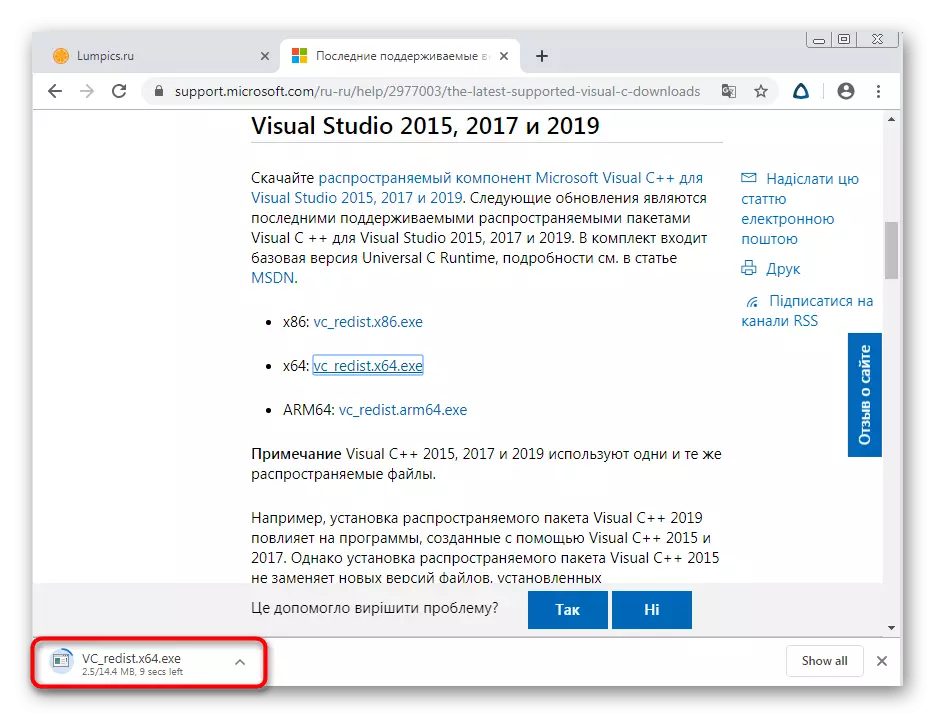


Method 4: Update .NET Framework
Ends the list of important additional components of the operating system distributing DLL files, a library called .NET Framework. It is responsible for the correct interaction of network resources and sometimes participates in the exchange of information between programs. A separate article on our website is devoted to updating .NET Framework. Check out it by clicking on the link below if you need to check updates of DLL objects associated with this library.Read more: How to update .NET Framework
Method 5: Updating component drivers
Now let's talk about software that allows you to correctly interact the built-in and peripheral components with Windows. This software is called the driver and is installed both using the tools of the operating system itself and through official or alternative sources. There are DLL libraries that are part of the drivers, respectively, their update occurs when the latest versions of the software are installed. As it was already said earlier, it can be performed by completely different ways, so the user will easily find optimal for itself. Detailed instructions on this topic can be found below.

Read more: How to update drivers on the computer
Method 6: Updating the versions of programs and applications
As a penultimate option, we want to tell about third-party programs and applications that perform a variety of functions and are installed on personal preferences of each user. At the beginning of this article, we have already talked about the fact that there are certain DLLs, which are unique developments of software producers. Updates are installed for them together with patches or new versions of the application itself. This happens through the branded launcher, the installer received from the official site, or third-party solutions. All the necessary information about this is looking for in the materials further.Read more:
How to update computer programs
The best programs for updating programs
Method 7: Manual update of a specific DLL file
The latter in our current article was the method that will be suitable for users who are interested in updating one specific dynamically plug-in library and does not want to use
with one of the above methods. There are different products from third-party developers that allow you to download the DLLs of the built-in libraries. Most of the resources or programs are paid, since they guarantee security and correct functioning of the component, unlike free sites appearing on the first search engine issue page. Now for example, we will use the popular paid program called dll-files.com Client.
- After purchasing and installing dll-files.com Client, use the search bar to enter the file name.
- Run the search operation by clicking on the "DLL Search Search Search" button.
- Slide the slider to the "Advanced View" mode to obtain information about all available versions of the desired object.
- Find among all the appropriate (most often it is displayed first) and click the "Select Version" button.
- It remains to specify the folder for installation and click on "Install Now".
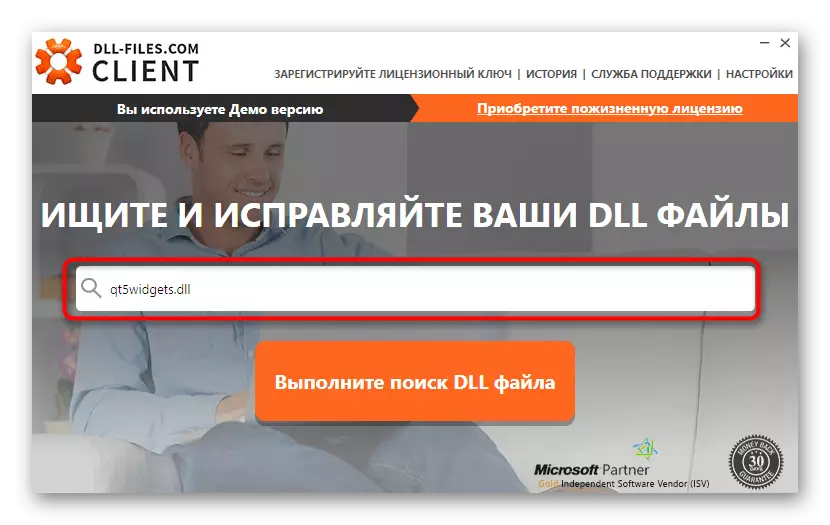

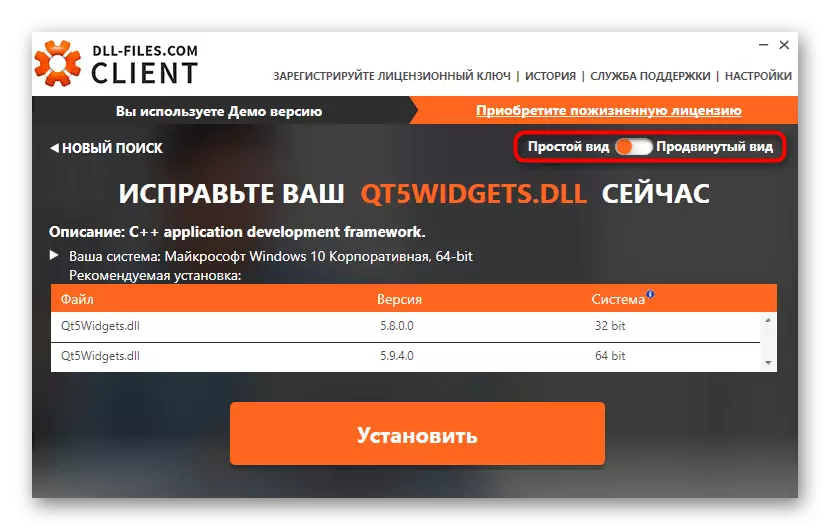

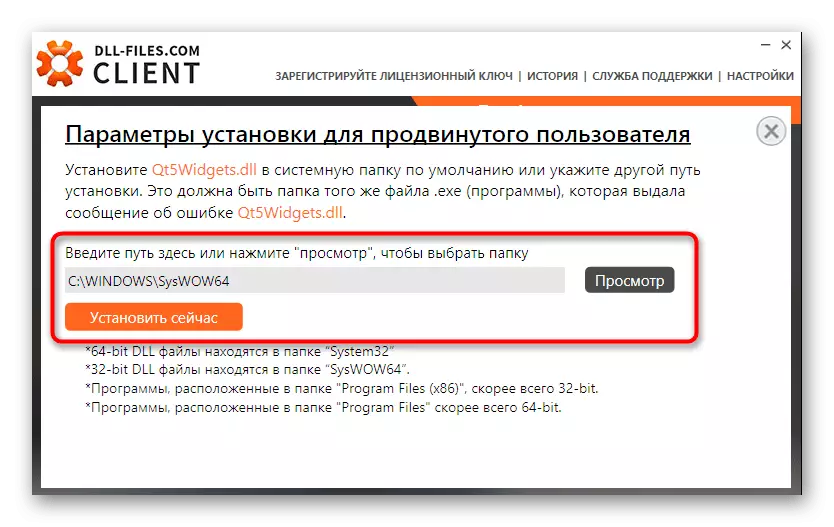
There are alternative options for the one we have just considered. The algorithm of their actions is about the same, and this is described in detail in another article on our website as follows the following link.
Read more: How to install the DLL library to the Windows system
Within the framework of today's material, you have been familiar with a large number of DLL format libraries in Windows 7. As you can see, each of them will only be suitable in a certain situation, which causes the user the need for the definition of the origin of the file before its update.
